Dive into Thai cuisine with our panang curry paste recipe. Imagine creating a dish that bursts with flavors, transporting you straight to a bustling Thai market. This paste is the heart of the rich and creamy panang curry, perfectly blending aromatic spices and herbs. Follow along, and let's bring the vibrant tastes of Thailand into your kitchen. You will want to take advantage of this culinary adventure!
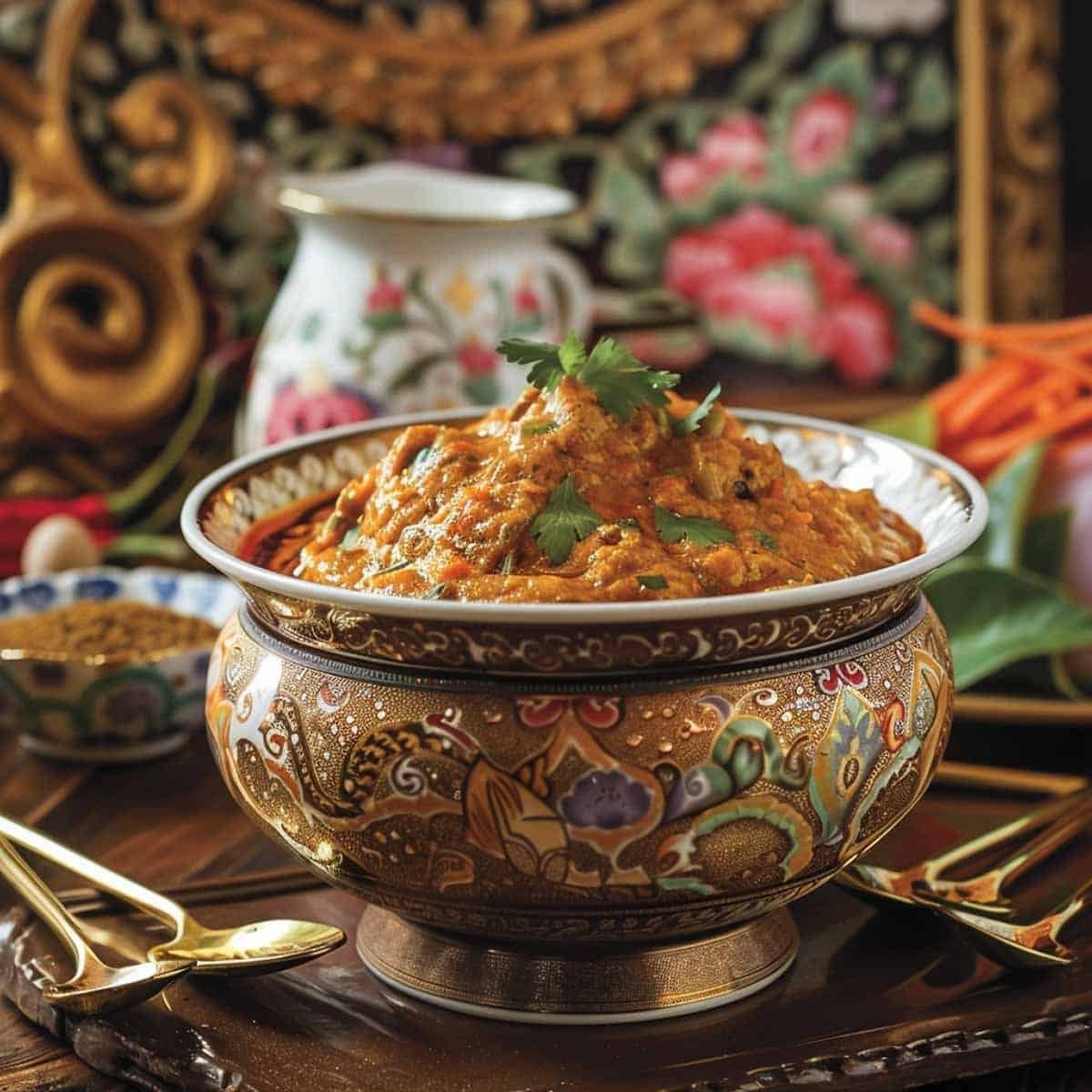
Background and Influence of Panang Curry Paste
Panang Curry Paste, rooted deeply in Thai cuisine, carries a rich history of culinary traditions. Originating from the Malay-influenced southern regions of Thailand, Panang Curry distinguishes itself with a thicker, creamier texture compared to other Thai curries. This paste's blend of spices and herbs reflects a harmonious balance of sweet, salty, and spicy flavors influenced by Indian and Malay cooking styles. Historically, Panang Curry Paste was a cherished recipe passed down through generations, each adding its unique touch. Today, it is a testament to Thailand's diverse culinary heritage, inviting you to explore its flavorful depths.

Sawasdee Kha, and Hello
Making Panang curry paste is a nostalgic journey, reminding me of my grandmother's kitchen. The air would be filled with a tantalizing aroma, a precursor to the delicious meal we were about to enjoy. With its unique blend of flavors, this Panang curry has always been a family favorite. The paste's vibrant colors, aromatic spices, and the perfect balance of sweet and spicy notes set it apart.
The way this paste transforms essential ingredients into a culinary masterpiece is truly magical, and I'm excited to share this recipe with you. Each time I make it, I'm transported back to those precious moments in my grandmother's kitchen, filled with love and warmth. Creating the paste is as rewarding as the final dish itself.
Join me in this culinary journey and experience the magic of Panang curry paste in your kitchen. I'm eager to hear how this recipe enhances your dishes and brings a touch of our family's tradition to your table. Let's share in this culinary adventure and enjoy the delightful results together!

Welcome! So glad you could join me. Let's make some delicious Panang Curry Paste together!
Unlock the Flavors: Key Ingredients for Authentic Panang Curry
Panang curry paste is a delightful mix of traditional Thai spices and herbs. You'll need coriander seeds, cumin seeds, white peppercorns, dried red chilies, salt, garlic, shallots, lemongrass, galangal, kaffir lime zest, and shrimp paste. These ingredients combine to create a paste bursting with flavor, essential for making an authentic Panang Curry.

Get Toasty: Preparing Your Curry Spices
Begin by toasting the coriander seeds, cumin seeds, and white peppercorns in a dry skillet over medium heat. Stir constantly for about 3-4 minutes until they become fragrant. This step enhances the depth of flavor in your curry paste. Transfer the toasted spices to a mortar and pestle and grind them into a fine powder.
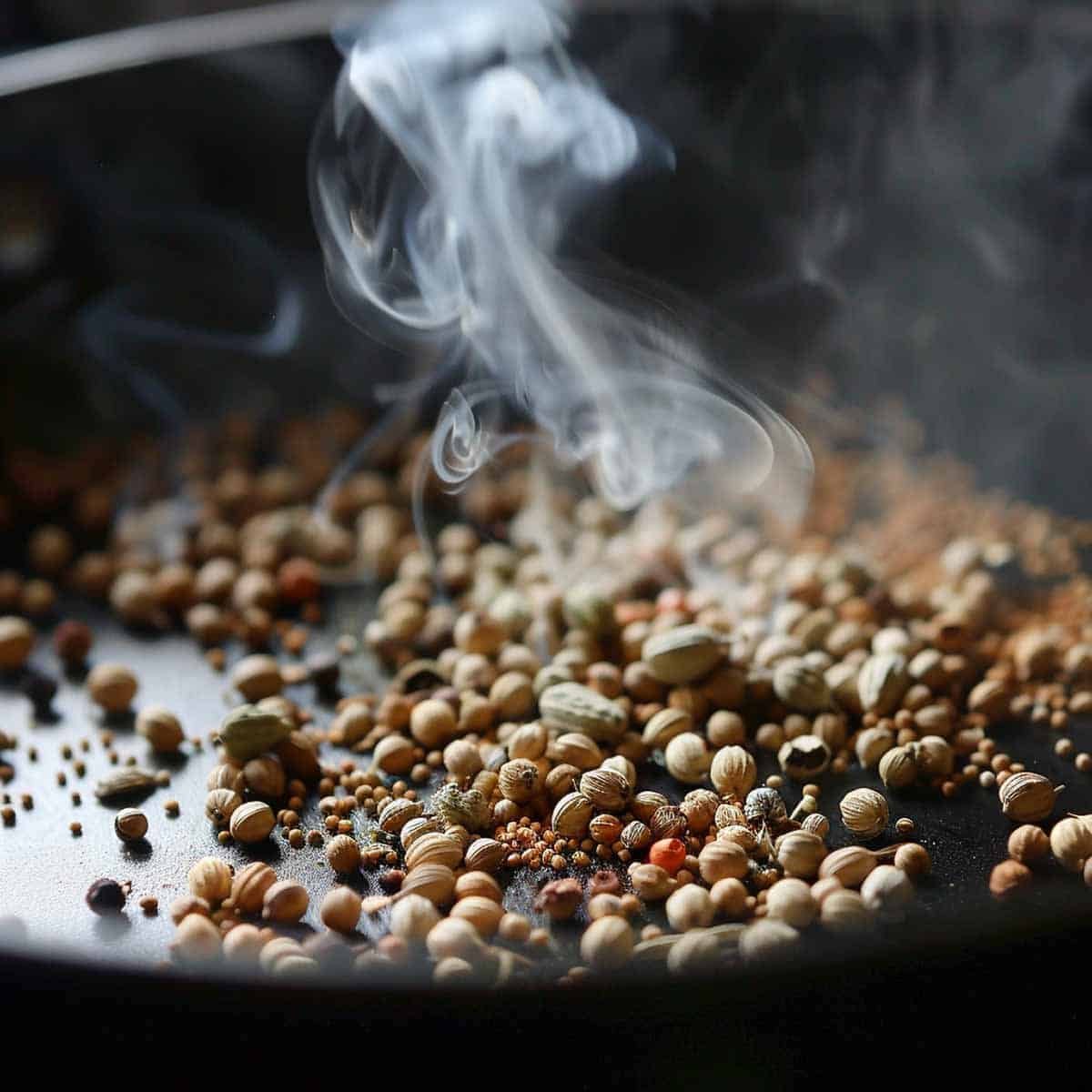
Soft and Spicy: Prepping Your Chilies
Soak the dried red chilies in warm water for about 15 minutes to soften them. Once softened, drain and deseed the chilies. This process reduces the heat while retaining the chili's vibrant color and flavor. Combine the chilies with salt in a mortar and pestle and pound until a smooth paste forms.
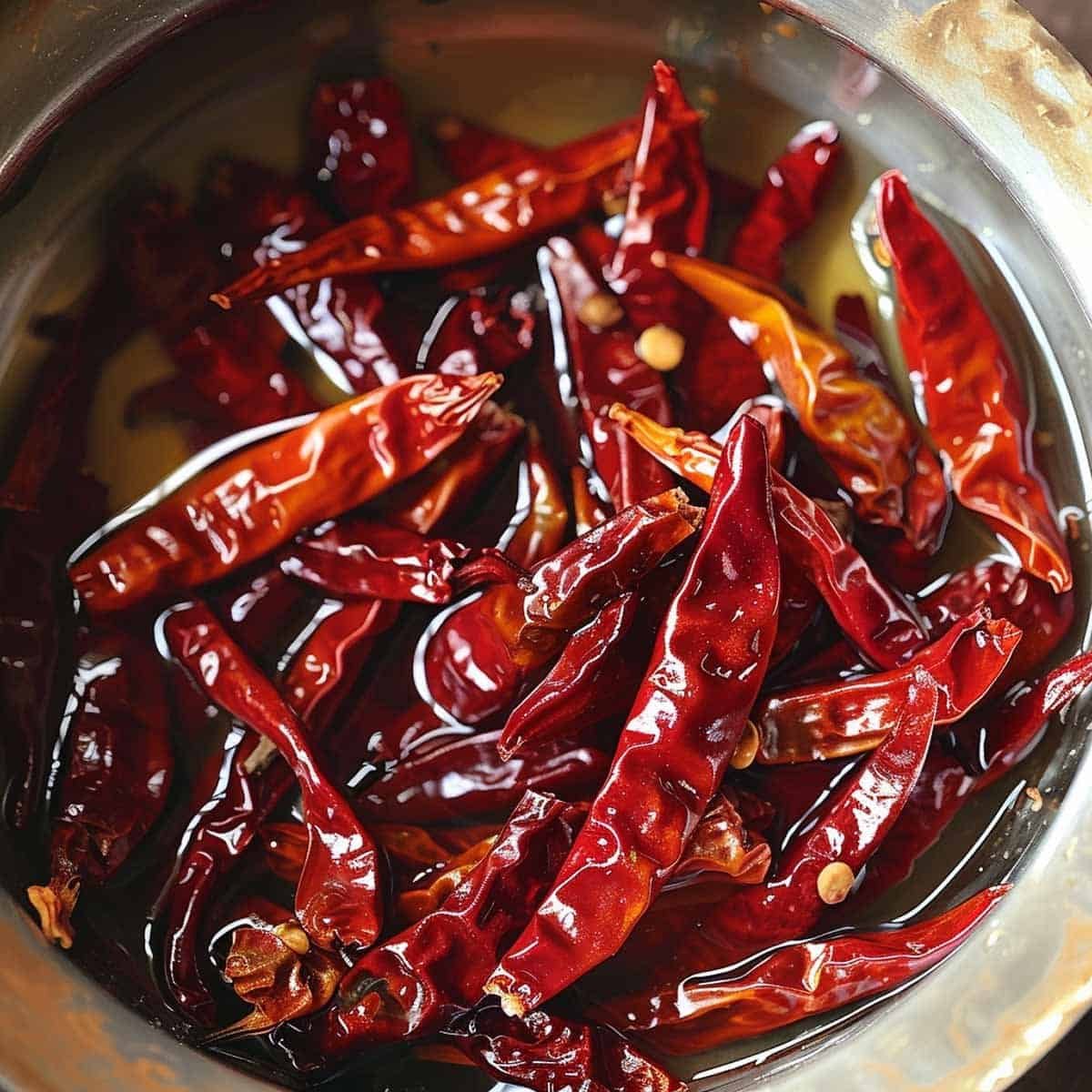
Blend the Aromatics
Add garlic, shallots, lemongrass, galangal, and kaffir lime zest to the chili paste. Pound the ingredients together until well combined and smooth. This step requires patience but ensures that the flavors meld beautifully. The aroma will start to fill your kitchen, promising a delicious outcome.
Incorporate Shrimp Paste
Mix in the shrimp paste, ensuring it is well integrated into the curry paste. This ingredient adds a subtle umami flavor characteristic of authentic Panang Curry. Continue pounding until the paste is smooth and consistent.
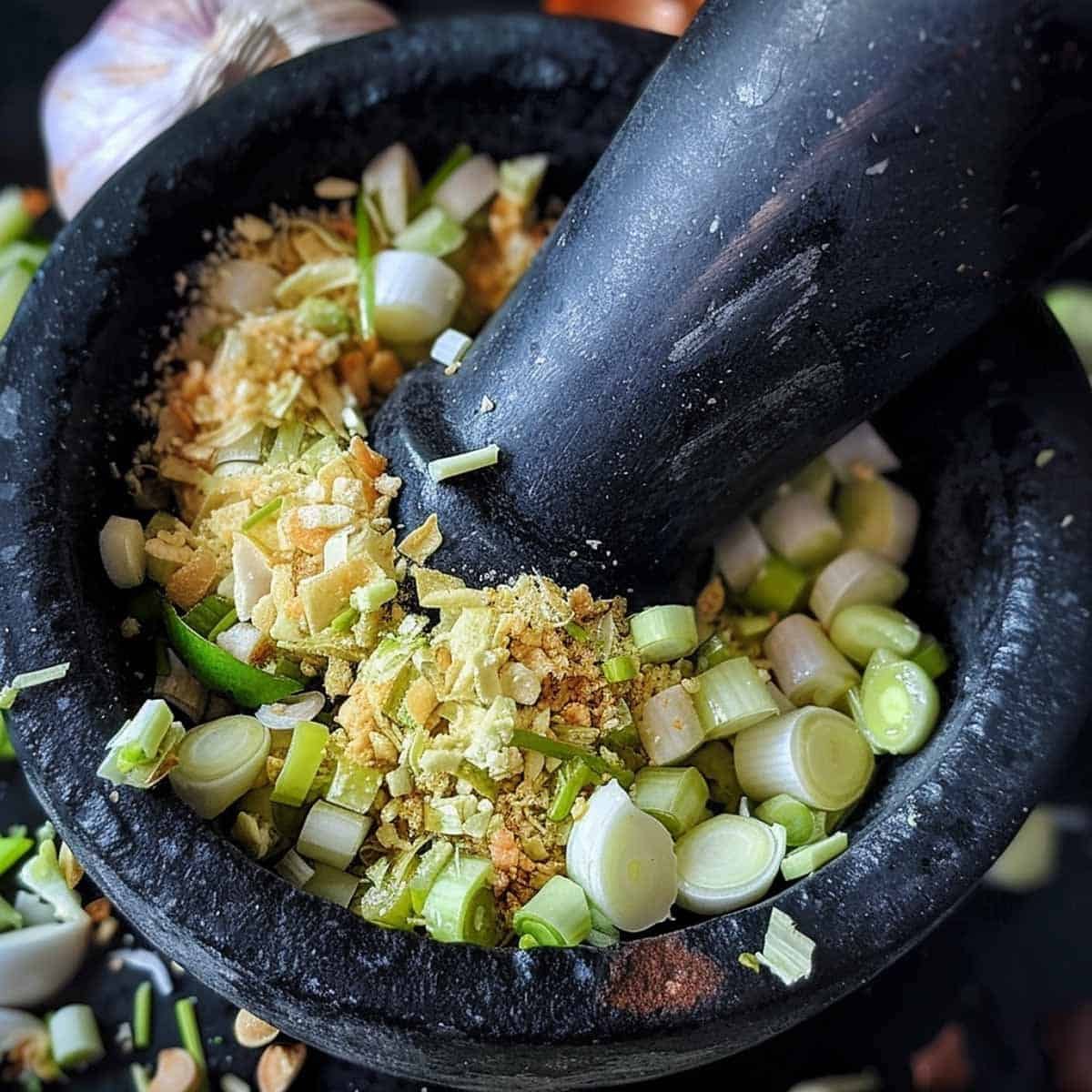
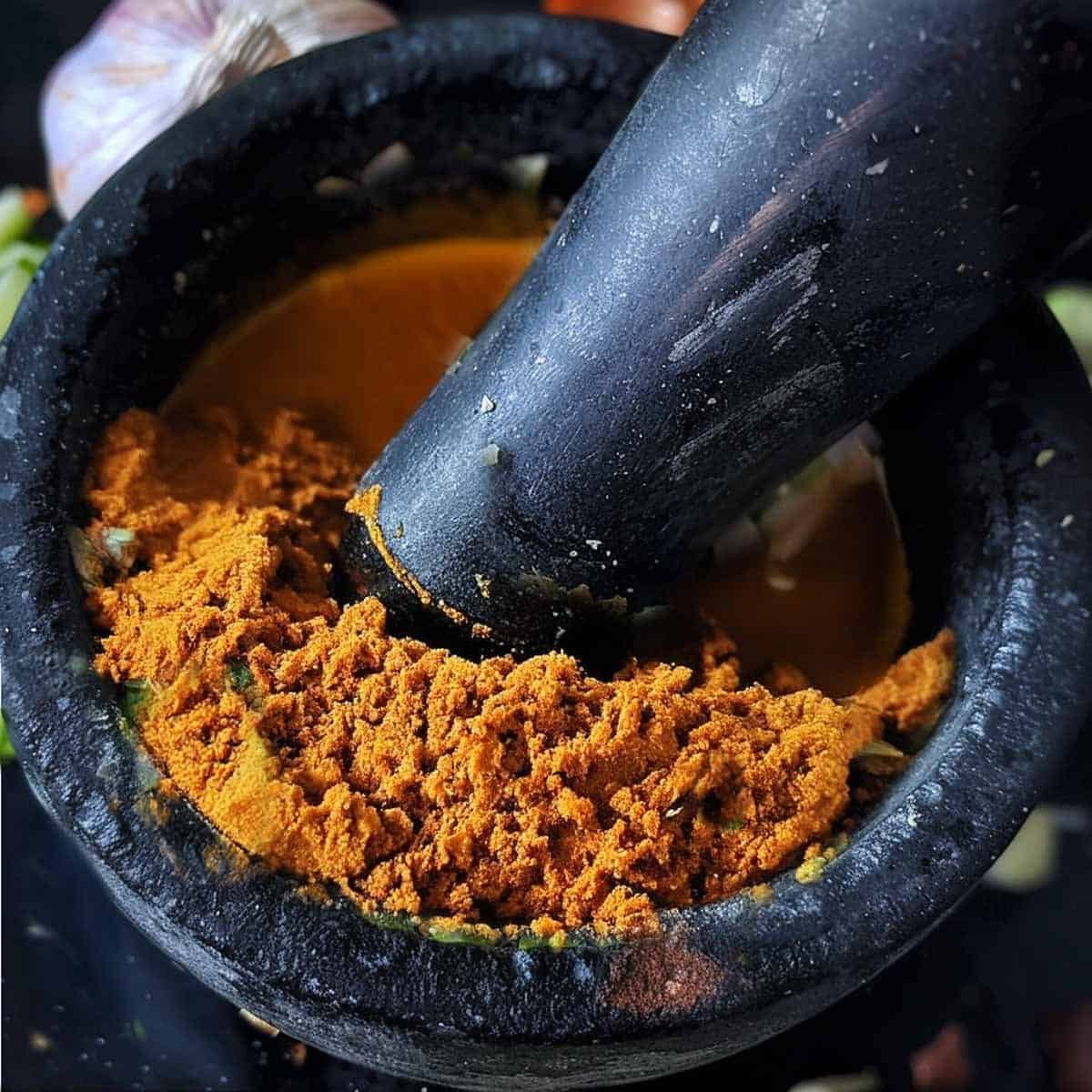
Store the Paste
Transfer the mixture to a blender or food processor for a finer texture and blend until completely smooth. Add a small amount of water to help the blending process if needed. Your Panang Curry Paste is now ready to use or store.
Transfer the paste into an airtight container and store it in the refrigerator for up to one week, or freeze it for up to three months. This allows you to have homemade curry paste readily available for future culinary adventures.
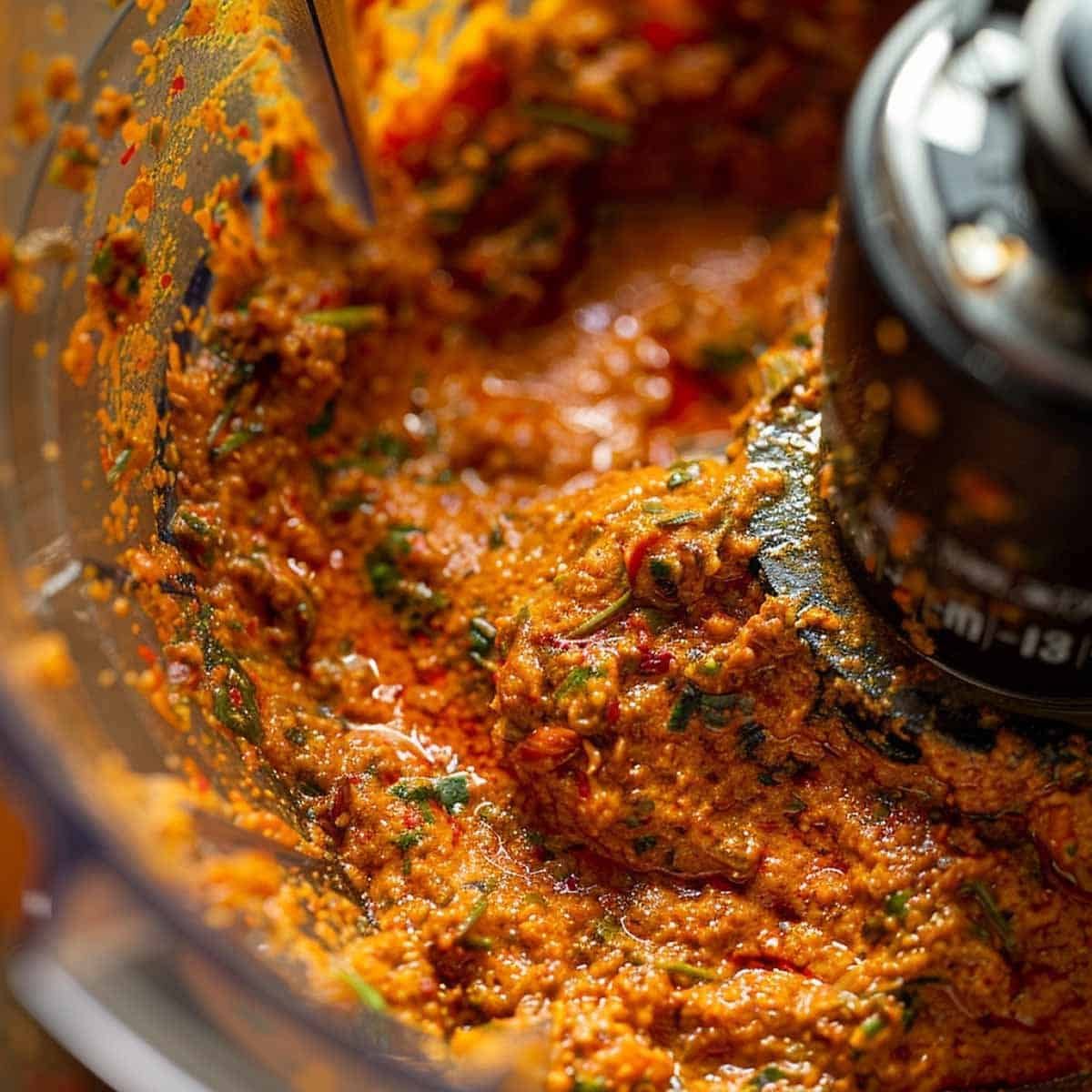
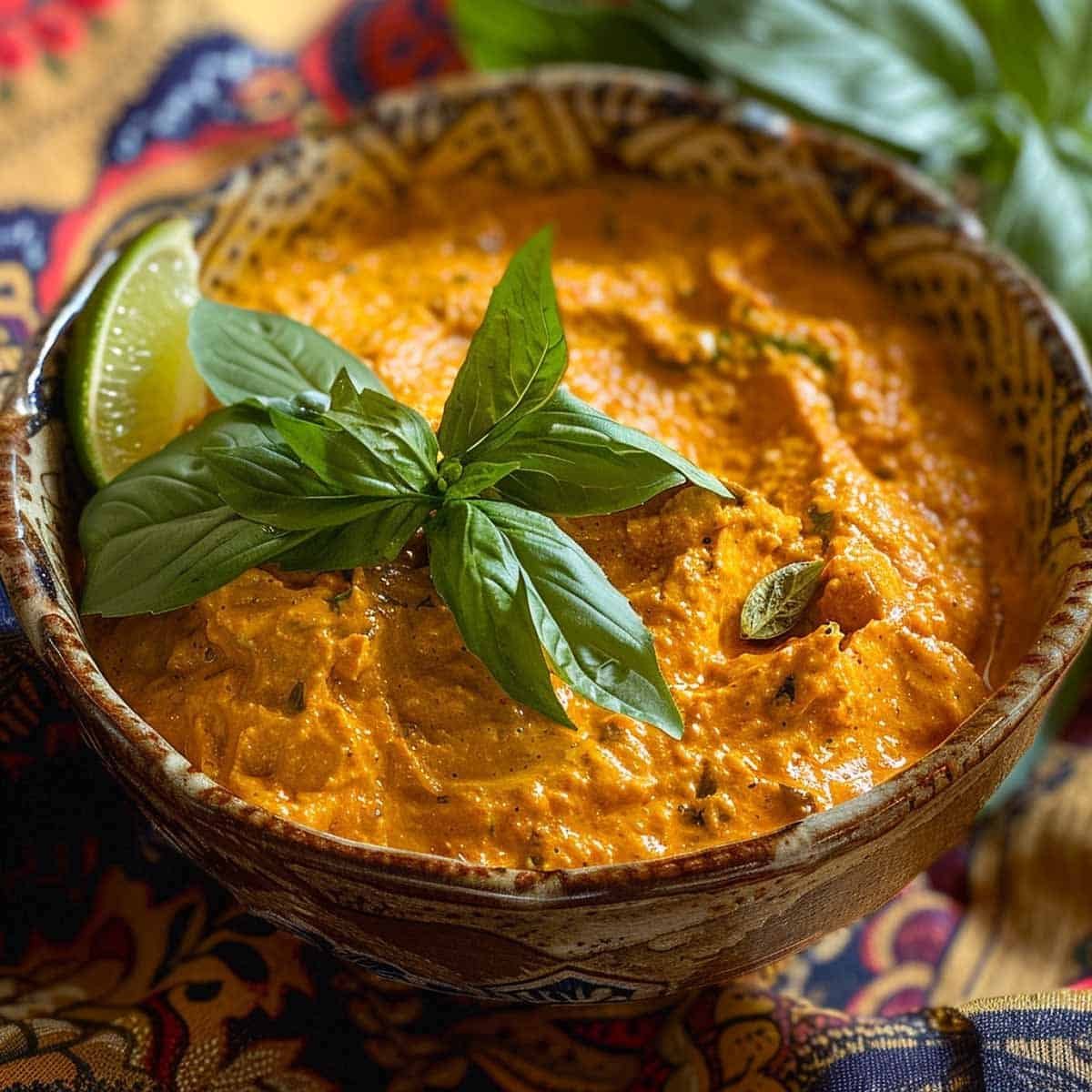
Tips for Authenticity and Customization For Panang Curry Paste
Using Authentic Ingredients
Sourcing ingredients ensure your Panang Curry Paste is as authentic as possible. Use fresh lemongrass, galangal, and kaffir lime zest to bring out the authentic flavors. These ingredients are often available at Asian grocery stores. High-quality dried red chilies will also impact the paste's flavor and heat. The shrimp paste is another crucial component, providing that signature umami taste. While it may be tempting to use substitutes, authentic ingredients make a noticeable difference in achieving the true essence of Thai Panang Curry.
Adjusting Spiciness and Flavors
Panang Curry Paste is known for its balanced flavor profile, but you can easily change it to suit your taste. To make it spicier, leave some seeds in the dried chilies or add a few bird's eye chilies. Remove all seeds from the chilies before soaking them for a milder paste. If you prefer a sweeter note, add a touch of palm sugar during blending. Adjusting the amount of shrimp paste can also modify the umami flavor, allowing you to tailor the paste to your preference while maintaining its authentic character.
Substitutions
There are several options if you have dietary restrictions or need to substitute ingredients. For a vegetarian version, replace the shrimp paste with a fermented soybean paste or miso. Ginger can be substituted if galangal is unavailable, though it will slightly alter the flavor. You can also use lemon zest in place of kaffir lime zest, but again, it will change the overall taste. Those who prefer less heat opt for milder dried chilies. These substitutions ensure you can still enjoy a delicious Panang Curry Paste while accommodating dietary needs.
Alternative Garnishes
Traditional garnishes for Panang Curry include finely sliced kaffir lime leaves, fresh Thai basil, and chopped peanuts. However, you can get creative with alternative garnishes to add different flavors and textures. Try topping your curry with crispy shallots for a crunchy contrast. Fresh cilantro leaves can add a bright, herbaceous note. A squeeze of lime juice before serving can enhance the dish's freshness. For a nutty flavor, consider toasted cashews instead of peanuts. These garnishes add visual appeal and elevate the overall dining experience.
Uses for Panang Curry Paste
Classic Panang Curry:
Description: Use Panang Curry Paste as the base for a traditional Panang Curry, combining it with coconut milk and your choice of protein (chicken, beef, tofu, or shrimp). Add vegetables such as bell peppers and green beans, and simmer until everything is cooked through.
Serving Suggestion: Serve hot over jasmine rice, garnished with fresh basil and lime leaves.
Panang Curry Noodles:
Description: Create a flavorful noodle dish by mixing Panang Curry Paste with coconut milk and broth. Add proteins like shrimp, chicken, or tofu, and toss with rice or egg noodles. Include vegetables like bell peppers, snap peas, and carrots for added texture and color.
Serving Suggestion: Garnish with fresh cilantro and lime wedges.
Panang Curry Fried Rice:
Description: Stir-fry day-old jasmine rice with Panang Curry Paste, vegetables (such as peas, carrots, and bell peppers), and your choice of protein. The curry paste adds a deep, aromatic flavor to the fried rice.
Serving Suggestion: Top with a fried egg and sprinkle with chopped green onions and fresh cilantro.
Panang Curry Pizza:
Description: Add a Thai twist to pizza by spreading Panang Curry Paste mixed with a bit of coconut milk on a pizza crust. Top with mozzarella, bell peppers, chicken, and fresh basil leaves.
Serving Suggestion: Bake until the cheese is bubbly and golden, then garnish with fresh cilantro.
Panang Curry Burgers:
Description: Incorporate Panang Curry Paste into ground meat or plant-based protein to create flavorful burger patties. The paste adds a unique Thai twist to classic burgers.
Serving Suggestion: Serve on toasted buns with a cucumber salad and a dollop of coconut-lime mayo.
These versatile uses for Panang Curry Paste showcase its ability to infuse dishes with rich, aromatic Thai flavors, which is a valuable addition to your culinary repertoire.
Serving, and Storage Tips.
How to Serve
Serve Panang Curry Paste as the flavorful base for a rich and creamy Panang Curry. Start by frying the paste in a bit of oil until fragrant, then add coconut milk and your choice of protein, such as chicken, beef, or tofu. Let it simmer until the protein is cooked and the flavors meld together. Garnish with finely sliced kaffir lime leaves and fresh Thai basil for an authentic touch. To soak up the delicious sauce, serve the curry hot and steamed jasmine rice or roti bread.
Reheating Options
To reheat Panang Curry, gently warm it on the stovetop over low heat, stirring occasionally until heated. If the curry thickens too much, add a coconut milk or water splash to reach your desired consistency. Avoid using high heat to prevent the coconut milk from separating. For microwave reheating, use a microwave-safe dish, cover it with a microwave-safe lid or wrap, and heat in short intervals, stirring between each interval until hot.
Make-Ahead and Storage
Panang Curry Paste can be made ahead of time and stored in an airtight container in the refrigerator for up to one week. For longer storage, freeze the paste in ice cube trays, then transfer the frozen cubes to a freezer bag. This way, you can conveniently use portions as needed. Thaw the paste in the refrigerator or at room temperature when cooking. Making the paste ahead ensures you have a quick and easy way to prepare Panang Curry whenever the craving strikes. Visit foodsafety.gov for more information.
Required Kitchen Equipment for Panang Curry Paste
- Mortar and pestle: For grinding spices and making the paste.
- Blender or food processor: To achieve a smooth consistency.
- Skillet: For toasting spices and frying the paste.
- Airtight containers: For storing the paste.
Tasting Notes For Panang Curry Paste
Visual: The Panang Curry Paste presents a stunning, rich, deep orange color that immediately draws the eye. The paste is dotted with visible flecks of ground spices and herbs, giving it a slightly coarse yet appealing texture. The overall appearance is thick and somewhat chunky, indicating a robust and hearty blend of ingredients. Under the light, the paste glistens subtly, a testament to the natural oils released from the toasted spices, making it look fresh and delicious.
Aroma:
The aroma of the Panang Curry Paste is captivating and multi-layered, promising a complex and rich flavor profile. Initially, the first scent is an inviting mix of earthy and spicy notes from the toasted coriander and cumin seeds. As you inhale more profoundly, moreover, the citrusy brightness of lime zest mingles with the fragrant sweetness of shallots and garlic. Additionally, this blend of scents creates an aromatic experience that foreshadows the paste's intricate taste.There's also a subtle smokiness from the dried chilies. The shrimp paste adds a delicate umami aroma, enhancing the overall olfactory experience with a savory, mouthwatering scent that hints at the delicious flavors.
Taste:
The Panang Curry Paste delivers a unique blend of bold and vibrant flavors that dance on the palate. Firstly, the natural sweetness of the shallots and garlic pleasantly balances the initial heat from the dried chilies. Furthermore, the toasted spices introduce a deep, earthy undertone that provides a solid foundation for the paste's flavor. Additionally, the citrusy notes from the lime zest add a refreshing and tangy finish, effectively cutting through the richness. Moreover, the shrimp paste contributes a subtle, savory depth, enhancing the umami aspect and beautifully tying all the flavors together. Consequently, each bite reveals a new layer of complexity, making the taste both intriguing and satisfying.
Texture:
the Panang Curry Paste is a testament to its opulence and decadence. It is dense and velvety, with a slightly grainy consistency due to the finely ground spices and herbs. This robust texture ensures that the paste clings lovingly to proteins and vegetables when cooked, enveloping them in a luscious, flavorful hug. As it warms, the paste dissolves into a silky and creamy sauce, seamlessly integrating with coconut milk or other liquids. The mouthfeel is both substantial and lavish, offering a gratifying and indulgent experience with each mouthful. The slightly chunky bits of spices and herbs provide an intriguing textural counterpoint, enriching the overall eating experience.
The Panang Curry Paste, a culinary masterpiece hailing from the heart of Thailand, is indeed a true testament to the country's gastronomic artistry. With its vibrant hue and alluring scent, moreover, it boasts an intricate flavor profile and satisfying texture. In other words, it encapsulates the diverse and vibrant flavors of Thai cuisine. Consequently, it elevates any dish into a sumptuous, flavorful indulgence. Therefore, it becomes a treasured addition to any culinary repertoire.
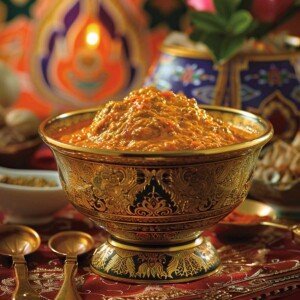
Ultamate Panang Curry Paste Recipe
Ingredients
- 2 tablespoons coriander seeds
- 1 tablespoon cumin seeds
- 1 teaspoon white peppercorns
- 10 dried red chilies soaked and deseeded
- 1 teaspoon salt
- 5 cloves garlic peeled
- 5 shallots peeled
- 2 stalks lemongrass finely chopped
- 1- inch piece galangal peeled and sliced
- 1 teaspoon kaffir lime zest
- 1 teaspoon shrimp paste
Instructions
- Toast the Spices: Begin by toasting the coriander seeds, cumin seeds, and white peppercorns in a dry skillet over medium heat. Stir constantly for about 3-4 minutes until they release a rich, aromatic fragrance. This toasting process intensifies the flavors of the spices, crucial for creating a robust curry paste. Transfer the toasted spices to a mortar and pestle and grind them into a fine powder, enhancing the depth of flavor.
- Prepare the Chilies: Soak the dried red chilies in warm water for approximately 15 minutes until they soften. Once softened, drain and deseed the chilies to moderate their heat while preserving their vibrant color and essential flavor. Combine the chilies with salt in a mortar and pestle, pounding them into a smooth, fiery paste that forms the base of your curry.
- Blend the Aromatics: Add garlic, shallots, lemongrass, galangal, and kaffir lime zest to the chili paste in the mortar. With patient pounding, blend these aromatic ingredients together until they meld into a harmonious, fragrant mixture. The kitchen fills with enticing aromas, promising a delicious outcome with every stir.
- Incorporate Shrimp Paste: Integrate the shrimp paste into the aromatic mixture, ensuring it distributes evenly. This addition infuses the paste with a subtle umami richness characteristic of authentic Panang Curry. Continue pounding until the paste achieves a smooth, consistent texture that's essential for a well-balanced dish.
- Final Blend: Transfer the paste to a blender or food processor for a finer texture, blending until completely smooth. If needed, add a small amount of water to facilitate blending. This final step ensures a silky consistency ideal for incorporating into various recipes.
- Store the Paste: Place the finished Panang Curry Paste into an airtight container. Store it in the refrigerator for up to one week to maintain freshness, or freeze it for longer storage, up to three months. Having homemade curry paste on hand allows you to effortlessly enhance future culinary endeavors with authentic Thai flavors.
Nutrition
Frequently Asked Questions for Panang Curry Paste
Yes, a food processor can blend the ingredients, but a mortar and pestle gives a more authentic texture and flavor.
The spiciness can vary. You can adjust the heat by adding or reducing the number of dried chilies used.
It can last up to three months when stored correctly in an airtight container or freezer bag.
Substitute the shrimp paste with fermented soybean or miso for a vegetarian version.


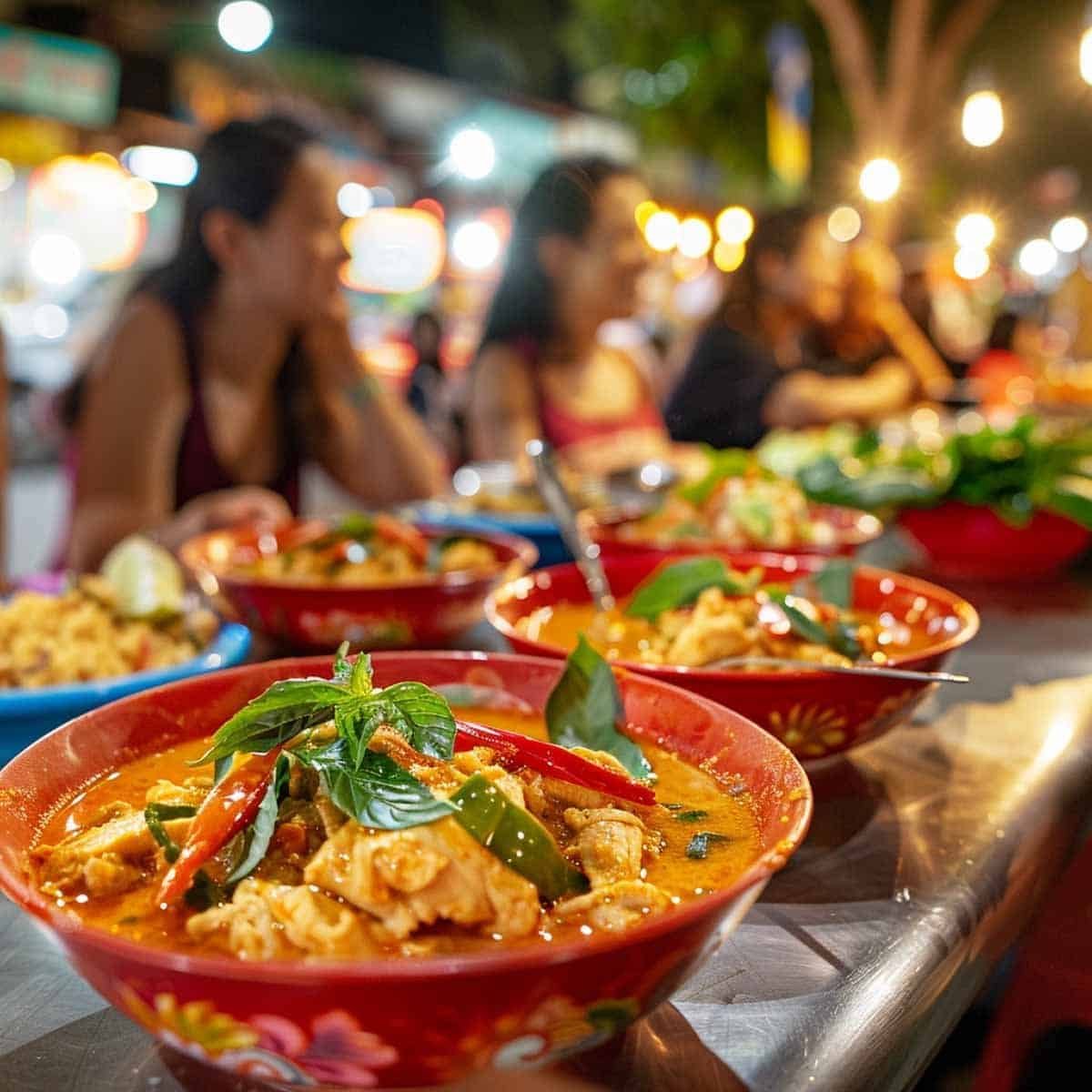

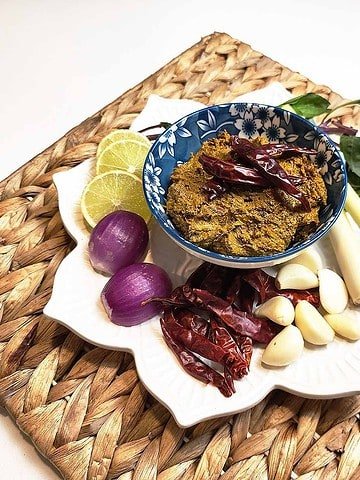
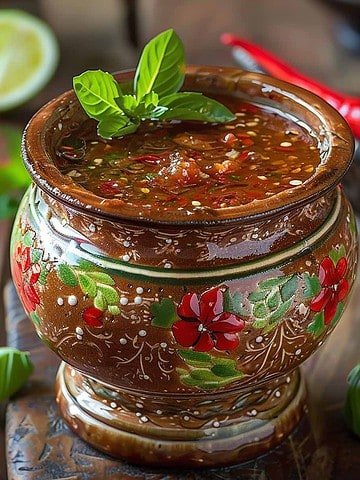
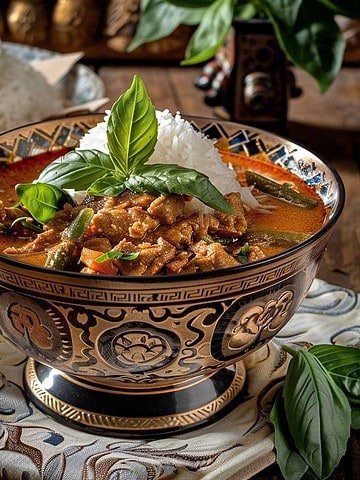
Leave a Reply